Leishmaniasis in Dogs
LEISHMANIASIS IN DOGS
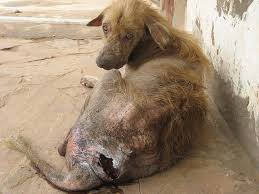
Leishmaniasis is a disease caused by a single celled parasite called Leishmania and is transmitted by a biting sandfly. (1) The disease is common in tropical and subtropical areas where the sandfly is found such as the Mediterranean area (Italy, Spain and Portugal), the Balkans, central and southwest Asia, north and northwest China, north and sub-Saharan Africa, and parts of Central and South America. (6) The disease has now moved to Northwest Italy and North America. (2) Leishmania infantum is the strain of the parasite found in the old world and Leishmania chagasi in the New World. (6) Unfortunately efforts to control Leishmaniasis in dogs have been largely unsuccessful. (3)
There are two types of Leishmaniasis in dogs: a skin form and a severe form that affects the internal organs, known as black fever. (1) Humans can also be infected. (2)
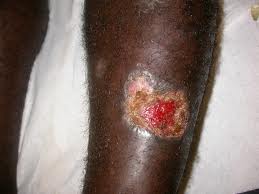
LIFE CYCLE
Leishmania species have a life cycle that involves two hosts—a mammal and a sand fly. Dogs are the normal carriers of the parasite, but it can also rarely be transmitted directly from dog to dog. (6) Traveling to regions where the sandfly is found is the most common way of picking up Leishmaniasis. However, receiving a blood transfusion from an infected dog can also lead to Leishmaniasis. (1)
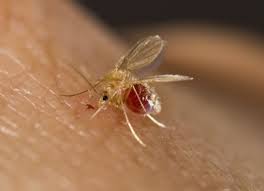
Female sand flies pick up the Leishmania parasite when they feed on an infected dog and swallow the parasite. Both sick and infected but ‘well’ dogs are capable of spreading the disease. Once swallowed, the parasite changes into a second form, called a promastigote which attaches to the gut wall of the sand fly, multiplies and changes again into an infective form. When the sand fly bites a dog, the promastigotes are injected into the animal’s skin. Inside the dog’s skin, they multiply inside certain types of white blood cells, the macrophages, and become amastigotes. (3)
After being bitten, there is an interval of one month to several years before dogs become ill. In these dogs, the parasite lies dormant, sometimes for years before a stressor allows the parasite to multiply and cause disease. (5) In virtually all dogs, it spreads throughout the body to the internal organs such as the liver, kidney and spleen, causing a chronic, debilitating, and sometimes fatal disease, (3) with many dogs dying of kidney failure. Males and females are infected equally, but males are more inclined to get the internal form. (1)
SYMPTOMS
There are many different symptoms in this complex disease. From most to least common are:
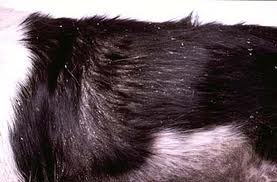
- Skin lesions – sores on the skin, peeling skin, ulcers, bald patches, excessive epidermal scaling with thickening, depigmentation (loss of skin color), and chapping of the muzzle and footpads. Nodules develop on the skin’s surface. Mange infections can occur. 90 % of infected animals show skin signs. (5)
- Weight loss from anaemia and infection
- Decreased appetite from anaemia and infection
- Tiring easily during exercise from anaemia and infection
- Depression
- Changes in the eyes – conjunctivitis, anterior uveitis, retinitis, blindness
- Bleeding from the nose, nasal discharge
- Fever with an enlarged spleen (33% of cases)
- Excessive thirst
- Excessive urine production
- Diarrhoea including tarry feces and vomiting
- Sneezing and coughing
- Lameness – wasting of the muscles, inflammation of muscles, swelling of the joints (polyarthritis), bony cysts, thickening of the bones (rare), swelling of the feet.
- Enlarged lymph glands
- Organ failure including heart failure and kidney failure (from protein losing nephropathy) (3) (5) (1)
- Long, thick claws (4)
- Painful nerve disorders
- Changes in body temperature (5)
- Pneumonia (5)
Owners of pet dogs have reported that some dogs become more aggressive as the first sign of Leishmaniasis. (6)
LABORATORY CHANGES
- Anaemia (low red cell count)
- Thrombocytopenia (low platelets)
- Lymphocytosis (elevated lymphocytes)
- Low albumin (blood protein)
- Elevated amlyase
- Elevated urea (BUN) and creatinine – raised kidney enzymes (6)
DIAGNOSIS
Your veterinarian will perform a thorough physical exam on your dog, taking into account where you have travelled. Blood tests for organ function and blood count should be run. Your vet can perform a snap test in house to test if your dog is positive for the disease, which is very quick. The urine should be checked as well. Tissue samples from the skin, spleen, bone marrow, or lymph nodes may be taken for laboratory culturing to confirm the diagnosis, as well as blood to check for anti Leishmania antibodies. (1)(3)
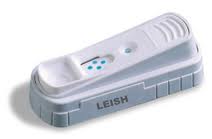
Diagnosis can be complicated by false positives caused by the leptospirosis vaccine and false negatives caused by testing methods lacking sufficient sensitivity. (2) The new snap test differentiates between a real infection and a vaccine antibody reaction.
PREVENTION
In areas where the known vector is a sandfly, sandfly repellent collars should be worn at all times. The sandfly is most active at dusk and dawn; keeping dogs indoors during those peak times will help prevent infection.

In 2003, Fort Dodge Wyeth released the Leshmune vaccine in Brazil for L. donovani (also referred to as kala-azar in Brazil). Studies indicated up to 87% protection. Most common side effects from the vaccine have been noted as anorexia and local swelling. (2) There is also a vaccine available now on the market for Leishmania in Europe. The vaccine has three parts and should be given over a period of six weeks. because it doesn’t provide 100% protection dogs should still wear fly repellent and not walk at dusk and dawn.
TREATMENT
Unless your dog is extremely ill, it will be treated as an outpatient. Very thin and chronically infected animals may need to be put to sleep. If your dog is not severely infected, your veterinarian will prescribe a high-quality protein diet, or a diet designed specifically for renal insufficiency if necessary. (1)
Canine cases of leishmaniasis are unfortunately much more resistant to treatment than are human infections. For this reason a complete cure is rare. Relapses are common and the situation is complicated by the fact that frequent, long term drug use can both be harmful to the dog and create drug resistant microorganisms. (3) (6)
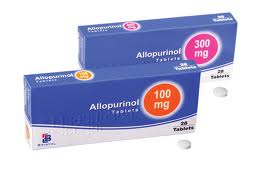
Maintenance therapy with allopurinol (10 mg/kg) decreases parasitemia, maintains infected dogs in an asymptomatic state, and decreases the likelihood of the flies picking the parasite back up. (6) A dog with leishmaniasis can live a happy and healthy life for many years. Allopurinol tablets are used for treatment of gout in humans. Vets in countries like Greece, Spain, Portugal, Turkey, routinely treat infected dogs rather than euthanise them. A well fed dog will do far better than a neglected one. Early treatment is also very important. (4)
ALTERNATIVE DRUGS USED TO TREAT LEISHMANIASIS
L. donovani
Antimonial resistant
Polyene antibiotic amphotericin B
L. infantum
Amphotericin B
Meglumine antimoniate
Pentavalent antimonials
Miltefosine
Allopurinol (2)
Antimoniate (Glucantime®) associated with Allopurinol (Zyloric®)
Aminosidine (Gabbriomycin®)
Spraying with insecticides inside the house can help to control the sandfly. (5)
LONG TERM MANAGEMENT
Your veterinarian will want to monitor your dog for clinical improvement as a relapse may occur few months to a year after the initial therapy; your veterinarianshould recheck your dog’s condition at least every two months after completion of the initial treatment. (2)
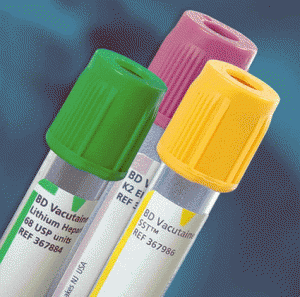
Dogs need regular monitoring via blood tests. At least once a year a test should be done to measure the level of Leishmaniasis antibodies in the blood. This test can be done in the UK. A general blood test should also be done to ensure that the dog’s kidneys and other organs are all functioning well. (4) If you live in a high risk area, blood screening should be done on a regular basis. This allows for an infection to be caught and treated early and avoid the risk of spreading the infection. Insect repellents containing DEET should be used at all hours of the day, and homes should be well-screened so that flies are less likely to gain entrance to the house. (3)
There is NO danger of Leishmaniasis being transmitted to other dogs in the UK and there is no danger of the disease being transmitted to humans. The sandfly that transmits the disease does not exist in the UK and canine Leishmaniasis is not the same disease that affects humans in some parts of the world. (4)
REFERENCES
1.http://www.petmd.com/dog/conditions/infectious-parasitic/c_dg_leishmaniasis
2.Leishmaniasis Wikipedia
3.http://bakerinstitute.vet.cornell.edu/animalhealth/page.php?id=1099
4.http://sos-animals.org.uk/canine-diseases/
5.http://www.stray-afp.org/wp-content/uploads/2012/06/Leishmaniasis-in-Dogs.pdf
6.Leishmaniasis

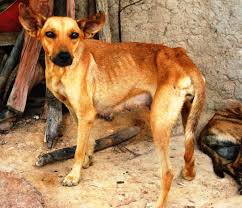
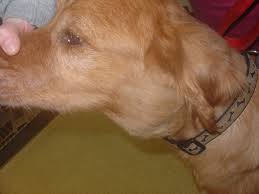
Leave a Reply
You must be logged in to post a comment.